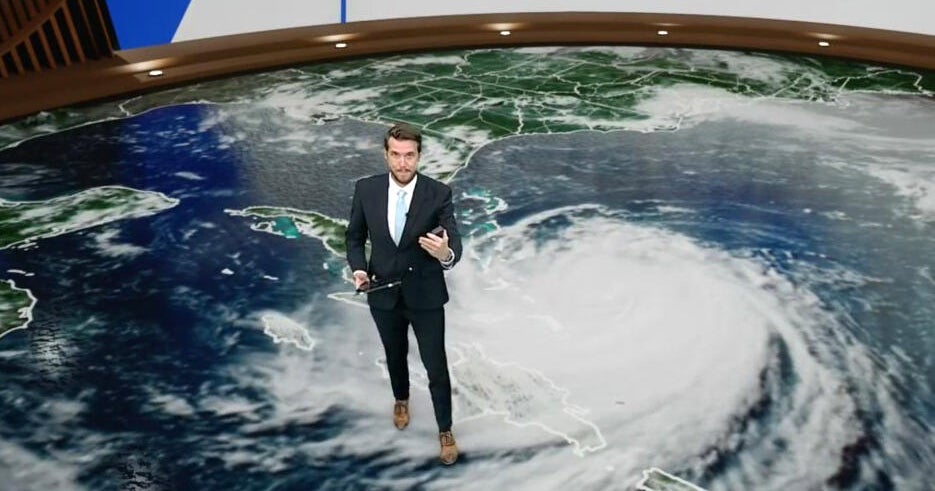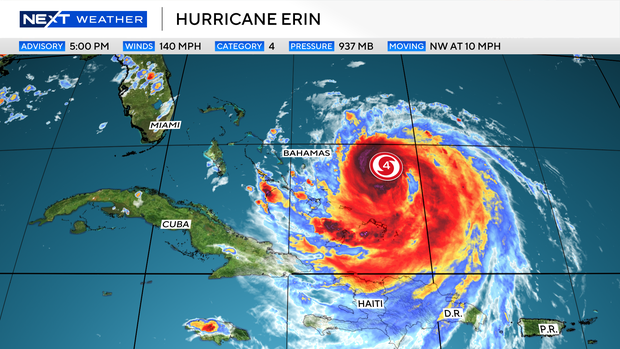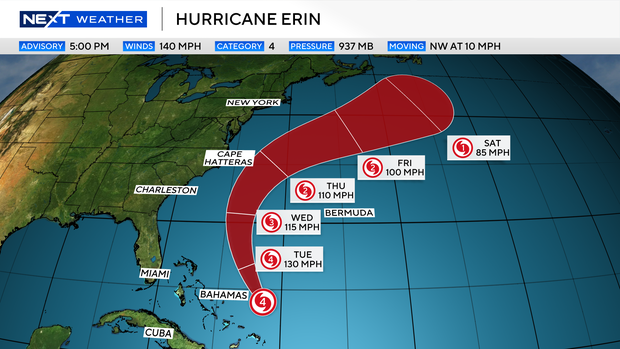Hurricane Erin remained a large and dangerous storm as it moved near the Bahamas Monday evening, but the NEXT Weather team stressed no direct impacts are expected for South Florida.
South Florida and U.S. East Coast residents, however, should brace for indirect effects, including higher surf and a heightened rip current risk over the next several days.
As Erin shifts north, winds along South Florida’s coastline will turn from the north, bringing a high rip current risk Tuesday that may linger until Thursday. Surf could rise up to 6 feet, especially along Palm Beach County. No official marine alerts have been issued.
Tracking Hurricane Erin
As of the 8 p.m. advisory from the National Hurricane Center, Erin’s maximum sustained winds are 130 mph and it is moving northwest at 10 mph.
Hurricane-force winds extend outward up to 80 miles from the center, while tropical-storm-force winds reach as far as 230 miles.
Erin’s outer rainbands are already affecting the Southeast Bahamas and the Turks and Caicos Islands, where tropical storm conditions will continue through Tuesday.
Hurricane Erin’s projected path
Erin is expected to make a turn to the north on Tuesday and is not forecast to make landfall on the east coast of the U.S.
The storm is expected to move between Bermuda and the Carolina coast on Wednesday and Thursday while gradually weakening.
North Carolina under tropical storm and surge watches
The heaviest impacts in the U.S. are expected along the North Carolina coastline and Outer Banks, where a tropical storm watch, storm surge watch, and high surf advisory remain in effect through midweek. Surge up to 4 feet and waves as high as 20 feet are possible.
Erin is forecast to shift northeast around Thursday and move further away from the U.S. into the Atlantic.
The NEXT Weather team will continue to monitor updates from the NHC and track the latest model trends.





